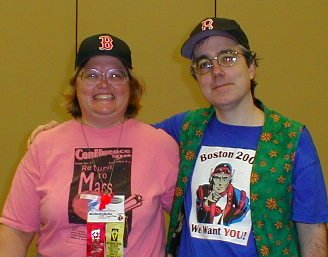Judas Unchained by Peter Hamilton
In Pandora’s Star, humanity, which had settled numerous planets tied together via artificial wormholes (a technology invented by Ozzie Isaacs and Nigel Sheldon), builds its first FTL starship and sends it to explore one of a pair of worlds encased by energy barriers. The explorers turn off the barrier (accidentally, it seems at the time) and release the Primes, extremely hostile aliens intent on being the only species in the galaxy. (Hamilton gives a good biological explanation for this mindset, so that they aren’t simply typical motivation-less evil aliens). The Primes eventually attack, taking over numerous planets, and are only slowed by Nigel who beats back a major part of the attack by manipulating wormholes to prevent the Primes from using their own wormholes. But everyone knows another, bigger attack will come, so the race is own to develop weapons that can stop the Primes.
Intertwined with this is the story of the Starflyer – the name given by the Guardians of Humanity, a group of people to on the planet Faraway (the most distant planet in human space) – to the alien they claim survived the crash of an old starship found on the planet. They claim this alien is infiltrating humanity and was responsible for releasing the Primes so that humanity and the Primes would wipe one another out. What seems like a crackpot idea at the start turns out to be real, and a major thread of the second novel is the search for the Starflyer’s agents (modified humans), while another thread involves the attempt to stop the Starflyer from making it back to Faraway and its starship.
There is so much here – so many threads, so many characters, so many settings, and so many great scenes – that it’s hard to touch on more than a little of it here. The society is complex. There are several interesting aliens species. There are several incredibly exciting moments, such as the second Prime attack, when humanity must first stop the Primes’ new weapon (the flare bomb, which can cause a star to flare, making planets in the system uninhabitable to any life but Prime) with their own new “quantum busters,” then race against time to launch a new model starship to take out Hell’s Gateway, the Primes’ wormhole staging planet, before their overwhelming attack completely defeats humanity.
There are also moments where Hamilton seems to channel space opera writers of old:
Five hundred thousand kilometers in front of the sleek ultra-black ellipse of the frigate, the Dark Fortress writhed in electromagnetic agony. Beneath the outer lattice sphere a dense typhoon of radiant amethyst plasma was beset with eruptions and upsurges of copper and azure gyres. The unstable surface spun out tumescent fountains. As they lashed against the outer lattice sphere they triggered snapping discharges deep within the struts causing them to glow with ethereal radiance.
Add to this Ozzie Isaacs and friends as they explore a incredible artificial world, a “dirty-dozen” like group of criminals sent off to fight first the Primes, then the Starflyer, and political intrigues of various sorts and you get some feel for the complexity of the novel.
As I said, though, it is overlong. At a whopping 1235 pages (I have the UK paperback), it would have been better at 1000 pages. I found some of the sections centered on the Guardians of Humanity to be overlong; the Guardians are important to the plot, but we see to much of several Guardian characters, and some of these scenes could have been chopped or much reduced. The final chase on Faraway also goes on for far too long. And finally, I really got tired of hearing about the sex life of Melanie Rescorai (reported and agent for the vast AI called the SI).
Another problem is that Hamilton has created a society in which almost everyone is essentially immortal. People can be rejuvenated. Most everyone has an implant which keeps a backup of them, from which they can be “relifed.” And if that fails (for example, the implant is destroyed or lost), there are secure, offsite backups. This was a good way for Hamilton to keep several of his major characters like Nigel and Ozzie around throughout Commonwealth history. But it also takes away some of the impact and importance of some of what happens. Does it matter that much if a Starflyer agent kills hundreds of people if they can all be relifed and thus aren’t really dead? It lowers the stakes.
In the end, though, I liked this novel quite a bit despite these flaws. The flaws will probably keep it off of my Hugo ballot, but it’s just below that level. And I think over time I’ll like it even more as I look back on it. I’ll remember Ozzie and Paula Myo (the obsessed Investigator” and the attack on Hell’s Gateway, and the Dark Fortress, and the attempt to stop the Starflyer and the Primes and many other great moments and details. And the memories of the scenes that felt padded and the silly sex scenes and Tiger Pansy (don’t ask!) will fade.


0 Comments:
Post a Comment
<< Home